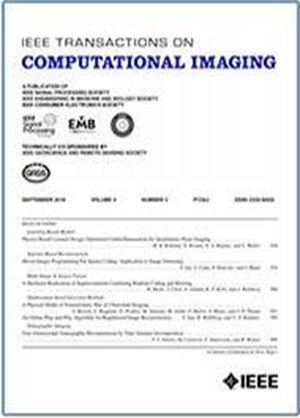测试时间自适应改进了基于补丁的扩散模型的逆问题求解
IF 4.8
2区 计算机科学
Q2 ENGINEERING, ELECTRICAL & ELECTRONIC
引用次数: 0
摘要
扩散模型由于其学习强图像先验的能力,在解决逆问题方面取得了卓越的成功,但现有的方法需要一个大型的图像训练数据集,该数据集应该来自与测试数据集相同的分布。在实践中,可用训练数据集的大小可以从不存在到非常大。在某些情况下,传统的扩散模型训练,从有限的数据可能会导致较差的重建结果,由于较差的先验学习。一种潜在的改进是,从具有可能不匹配分布的可用训练数据训练的扩散模型开始,然后在重建时细化网络以考虑分布不匹配。在这项工作中,我们研究了这种网络精炼过程对从不同程度的分布外数据训练的扩散模型的影响。具体来说,我们使用自监督损失使学习的扩散网络适应测试数据,同时帮助网络输出与测量保持一致。我们在理论和实验上都表明,基于补丁的扩散先验的测试时间适应比传统的全图像扩散模型的测试时间改进带来更高质量的重建。大量的实验表明,在广泛的反问题中,当训练分布和测试分布之间存在显著的域转移时,测试时间自适应显著提高了图像重建质量。有趣的是,即使在分布情况下,测试时间自适应也显著提高了重建质量。本文章由计算机程序翻译,如有差异,请以英文原文为准。
Test-Time Adaptation Improves Inverse Problem Solving With Patch-Based Diffusion Models
Diffusion models have achieved excellent success in solving inverse problems due to their ability to learn strong image priors, but existing approaches require a large training dataset of images that should come from the same distribution as the test dataset. In practice, the size of the available training dataset can range from nonexistent to very large. In some cases, conventional diffusion model training from limited data can lead to poor reconstruction results due to poorly learned priors. One potential improvement is to start with a diffusion model trained from available training data having a possibly mismatched distribution, and then refine the network at reconstruction time to account for the distribution mismatch. In this work, we investigate the effect of this network refining process on diffusion models trained from varying degrees of out-of-distribution data. Specifically, we use a self-supervised loss to adapt the learned diffusion network to the testing data while helping the network output maintain consistency with the measurements. We show that, both theoretically and experimentally, test-time adaptation of a patch-based diffusion prior leads to higher quality reconstructions than test-time refinement of traditional whole-image diffusion models. Extensive experiments show that across a wide range of inverse problems, test-time adaptation significantly improves image reconstruction quality when there are significant domain shifts between training and testing distributions. Interestingly, even for the in-distribution case, test-time adaptation also significantly improves reconstruction quality.
求助全文
通过发布文献求助,成功后即可免费获取论文全文。
去求助
来源期刊

IEEE Transactions on Computational Imaging
Mathematics-Computational Mathematics
CiteScore
8.20
自引率
7.40%
发文量
59
期刊介绍:
The IEEE Transactions on Computational Imaging will publish articles where computation plays an integral role in the image formation process. Papers will cover all areas of computational imaging ranging from fundamental theoretical methods to the latest innovative computational imaging system designs. Topics of interest will include advanced algorithms and mathematical techniques, model-based data inversion, methods for image and signal recovery from sparse and incomplete data, techniques for non-traditional sensing of image data, methods for dynamic information acquisition and extraction from imaging sensors, software and hardware for efficient computation in imaging systems, and highly novel imaging system design.
 求助内容:
求助内容: 应助结果提醒方式:
应助结果提醒方式:


